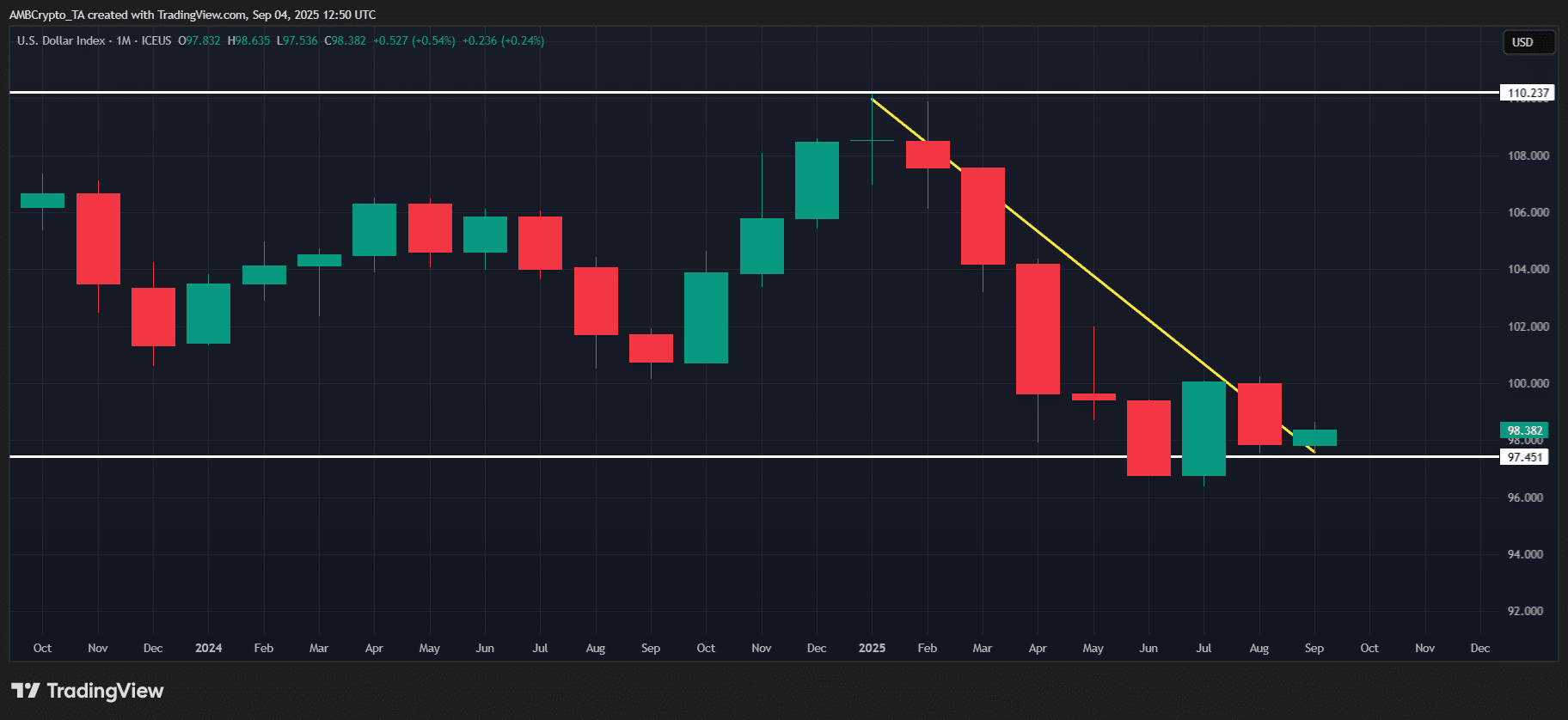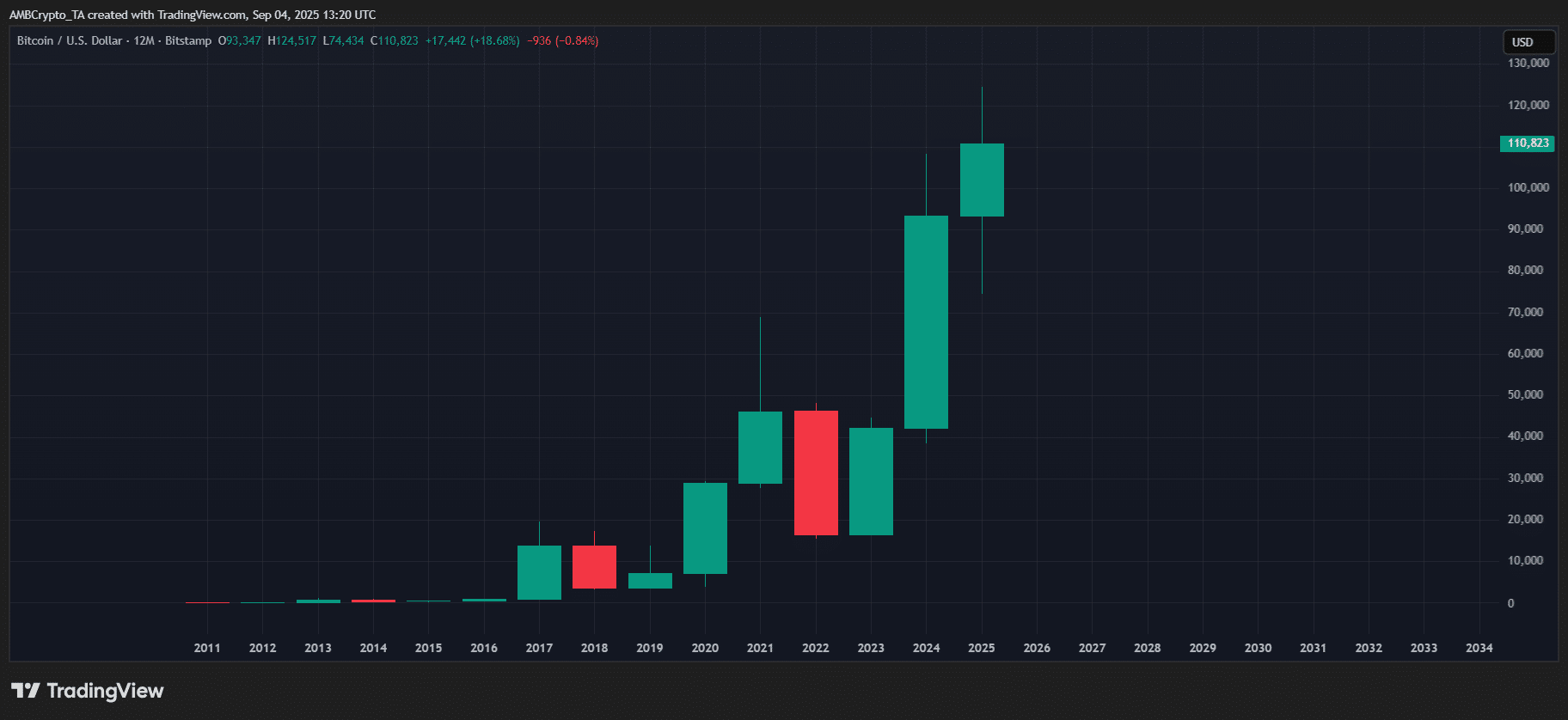Bitcoin is increasingly viewed as a macro hedge: under mounting U.S. debt and rising Treasury yields, investors are shifting capital into Bitcoin and gold as alternatives to the dollar and bonds, supporting Bitcoin’s store-of-value case amid fiscal stress and Fed policy dilemmas.
-
Rising U.S. debt pressures the dollar and Treasuries, boosting alternative assets like Bitcoin.
-
Investors rotated into Bitcoin (+18.76% in 2025) while gold outperformed with a 35.12% gain YTD.
-
U.S. debt stands at $37.3 trillion; annual interest ≈ $1 trillion and major rollover needs add systemic risk.
Bitcoin hedge: Assess Bitcoin as a store of value as U.S. debt rises and yields climb — read expert analysis and market data now.
What is Bitcoin’s role as a hedge against U.S. debt and dollar weakness?
Bitcoin hedge is increasingly positioned as an alternative store of value as U.S. sovereign debt and interest burdens rise. Investors are reallocating from cash and long-duration bonds into Bitcoin and gold, reflecting concern about dollar depreciation and fiscal sustainability.
How does rising U.S. debt pressure affect the dollar and Bitcoin?
U.S. federal debt is at $37.3 trillion. Annual interest costs are about $1 trillion, with roughly $9 trillion needed to roll over maturing debt plus an additional ~$2 trillion to cover the deficit. That fiscal strain reduces confidence in the dollar as a risk-free store of value.
Market signals: the U.S. Dollar Index (DXY) fell about 11% over the last seven months to 98.386. The 30-year Treasury yield spiked nearly 5% and the 10-year yield reached 4.22%, up from 3.84% a year ago. These moves have driven flows into alternative assets, supporting Bitcoin’s recent gains.

Source: TradingView (DXY)
Why are investors treating Bitcoin more like a macro hedge now?
Macro volatility and policy uncertainty are central. The Federal Reserve faces a dilemma: tighten to curb inflation and risk a debt servicing crisis, or ease and risk weakening the dollar. This trade-off is shifting investor behavior toward assets that can hedge currency and inflation risk.
Hedge fund manager Ray Dalio warned that current debt dynamics could trigger a debt-induced “heart attack” within three years. Market participants interpret such warnings as justification for diversifying into non-sovereign assets like Bitcoin and gold.

Source: TradingView (BTC/USDT)
How do Bitcoin, Gold and the Dollar compare under current market conditions?
Below is a concise comparison of recent performance and macro exposure.
| Asset | YTD Performance (2025) | Macro Role |
|---|---|---|
| Bitcoin (BTC) | +18.76% | Potential digital store of value, currency hedge candidate |
| Gold (XAU) | +35.12% | Traditional inflation and currency hedge |
| U.S. Dollar (DXY) | -11% (7 months) | Declining store-of-value confidence amid fiscal strain |
Frequently Asked Questions
Question: How should investors evaluate Bitcoin as part of a hedge strategy?
Assess Bitcoin by comparing volatility-adjusted returns, correlation with traditional assets, liquidity needs, and allocation sizing. Use scenario analysis for dollar depreciation and rising yields. Keep positions small relative to total portfolio until long-term behavior is empirically validated.
Key Takeaways
- Debt pressure matters: U.S. debt at $37.3T and rising interest obligations raise structural risks for the dollar.
- Market reaction: DXY weakness and higher Treasury yields have driven flows into Bitcoin and gold.
- Prudent approach: Bitcoin can play a hedge role for some portfolios, but volatility and liquidity risk require cautious allocation and stress testing.
Conclusion
As U.S. fiscal stress mounts and the Federal Reserve navigates a difficult policy path, Bitcoin is gaining credibility as an alternative hedge alongside gold. Investors should watch debt metrics, yields, and DXY, and use conservative allocation and scenario analysis when considering Bitcoin as a store-of-value. COINOTAG will continue monitoring market and policy developments.
